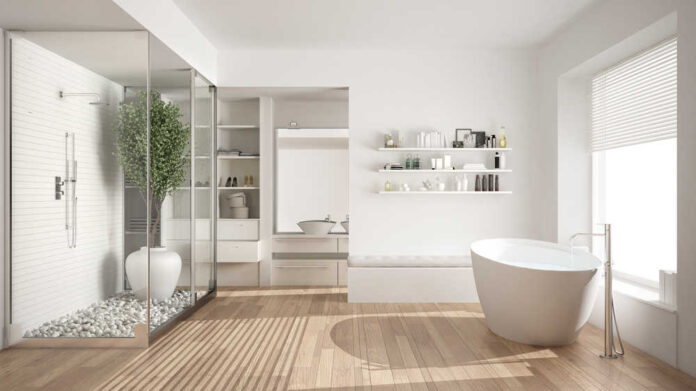
We all use the bathroom daily, but how often do we think about the potential dangers lurking in there?
Older adults and people with mobility issues may be more alert and vulnerable to accessibility and safety concerns in the bathroom. Still, everyone can benefit from taking a closer look at this often-overlooked area of the home.
Slips, Trips, and Falls.
In addition to slippery wet floors, bathrooms can also be hazardous due to cords and electrical outlets, cluttered countertops, and loose rugs or mats.
Some bathtubs and showers may be difficult to get into or out of. Also, sitting down on the toilet and standing back up are common times when people lose their balance and get injured.
To reduce your falling risk, ensure your bathroom is well-lit and free of clutter.
Use non-slip mats in the tub or shower and on the floor.
Install grab bars near the toilet and in the tub or shower. Towel racks are not strong enough to support your weight. You (and your guests) need something to hold onto that is sure to be sturdy and well-secured.
Hot Water Burns.
Bathtubs sink, and showers can get very hot very quickly.
To prevent scalding, set your water heater to 120 degrees Fahrenheit or lower. You may need to install a heat-safety device on your faucets and showerheads, especially if you have young children in the house.
Test the water temperature before getting in the tub or shower, and never leave small children unattended near any source of hot water.
Spreading Infections
Bacteria and viruses can thrive on surfaces like doorknobs, countertops, floors, faucets, and toilet handles.
You can help reduce the spread of germs by regularly cleaning and disinfecting these areas.
Always wash your hands thoroughly with soap and water after using the toilet and before and after eating.
Close the toilet lid before flushing to prevent the spread of germs.
Launder all towels, fabrics, and shower curtains frequently.
And if someone is ill with a contagious disease, it may be best to use a separate bathroom if possible until they recover and the bathroom has been cleaned and sterilized.
Mold and Mildew
Mold and mildew love warm, humid environments like bathrooms.
To prevent mold and mildew growth, keep the bathroom well-ventilated.
Use an exhaust fan or open a window when showering.
Wipe down surfaces after use, and clean the tub, shower, sink, and toilet regularly.
Hang up all wet clothing or towels so that they can fully dry.
If you do find mold or mildew in your bathroom, clean it immediately with a detergent solution or a commercial mold and mildew remover (and safety equipment—gloves, mask, and eye protection).
Harsh Soaps and Unhealthy Products
Some of the soaps, cleaners, and personal care products we use daily can contain harsh ingredients that can harm our health.
Some may provoke allergic reactions in you or one of your guests. Others may cause irritations and rashes or contribute to skin conditions such as eczema or dermatitis.
Always follow the manufacturer’s instructions when using any kind of cleaning product.
To be on the safe side, choose fragrance-free and hypoallergenic products.
Routine Checks and Upgrades
Even if your bathroom is generally safe, it’s a good idea to check it regularly for potential hazards.
Make sure cords and electrical outlets are in good condition.
Look for loose tiles or grout, and repair or replace anything that looks damaged.
If you have young children, install safety devices on faucets and showerheads, and keep toiletries and cleaning products out of reach.
Ensure that anyone with mobility or balance issues can safely use your bathroom by installing grab bars, non-slip mats, and other safety features as needed. Even if you don’t need them yourself, they could be handy for a future guest.






















